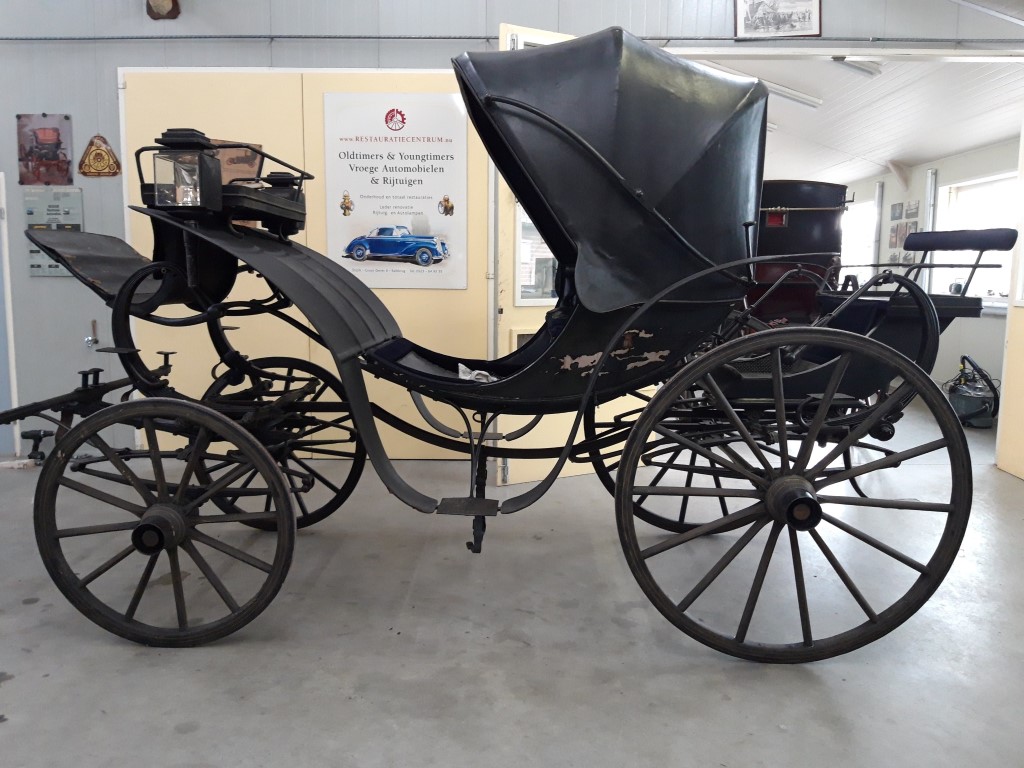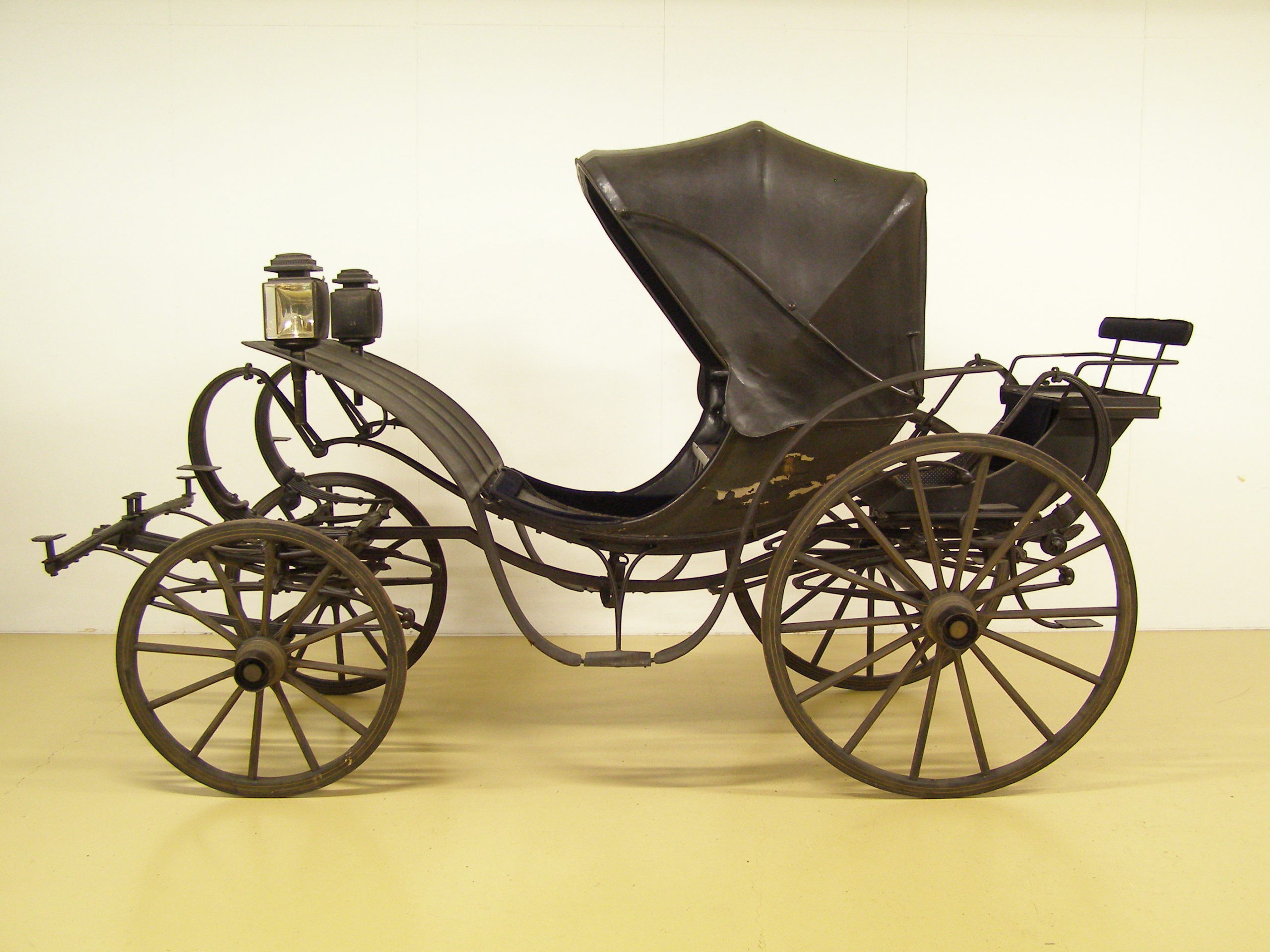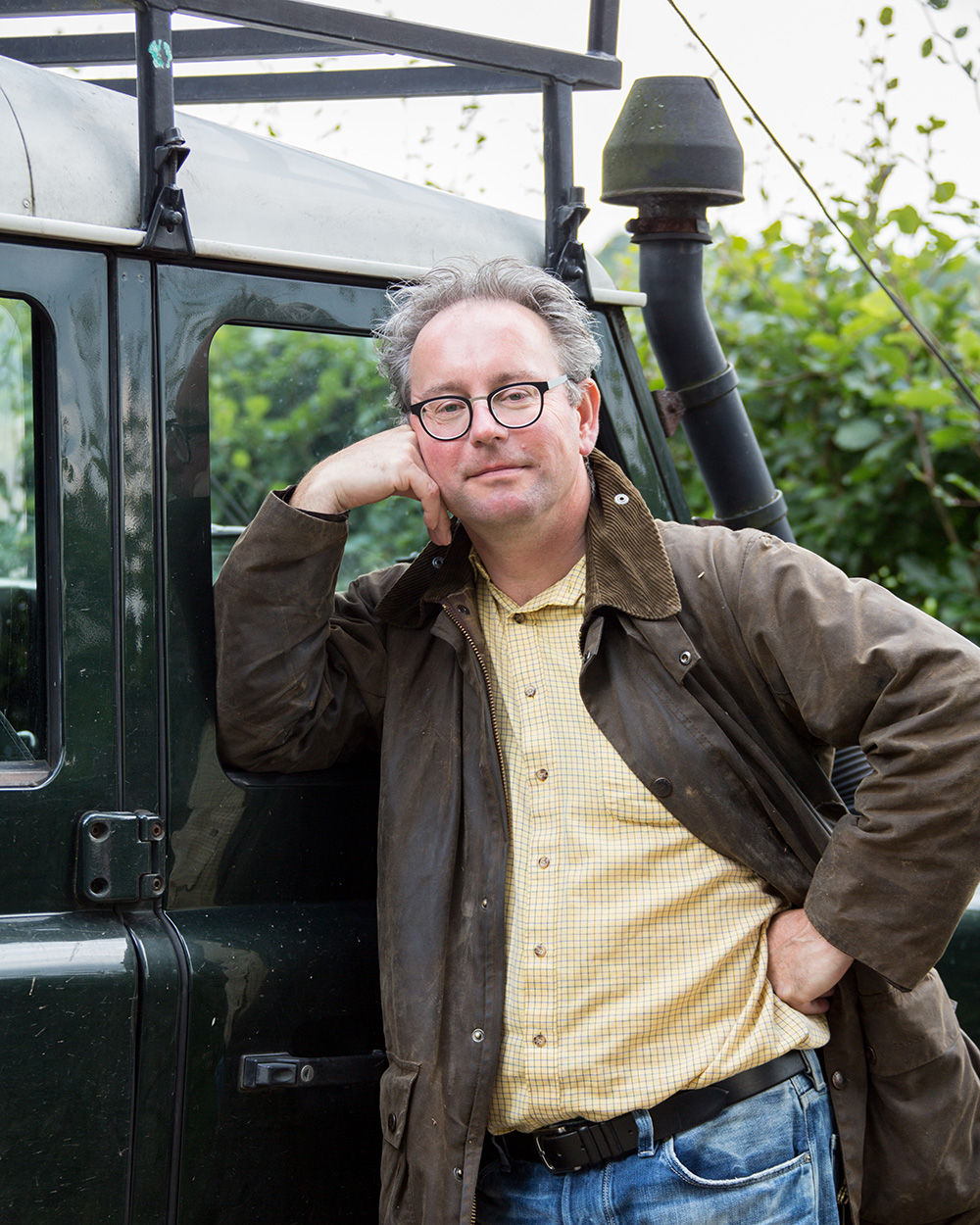Grand duc or victoria?
By: Mario Broekhuis
Now that the buck is on it, the Grand Duc of Kasteel de Haar has suddenly changed its name: we call it a Victoria. At Stolk in Balkbrug the restoration of the second carriage of Castle de Haar has been picked up.


"We built up coachman's seat, then the carriage dived even further forward. The rear springs tilted inward. We also started removing varnish. The good news is that it is removable and blue is emerging as we expected. It appears to be the first varnish. Bad news is that it is very labor intensive and the many small damages are now becoming very visible," the restoration company informs.
Without a buck, the carriage can be driven from the horse, à la Daumont is called, and is for fancy events. For that purpose, the Grand Duc of the castle also has a special drawbar: with a deep bend downwards, so that the tree between the horses does not interfere with the postillion's leg. The omission of the trestle has one great advantage for the passengers, because it allows you to look around you better and the spectators along the road can admire you better.
But now, for the first time in sixty years, this carriage briefly has a buck again. All this time the seat was somewhere in the depot of the National Carriage Museum. With coachman's buck, it is -according to those in the know- suddenly a different type of carriage, namely a Victoria. And that's for less flamboyant outings. Flipping through catalogs of the leading French, Belgian and Dutch carriage manufacturers around 1900, there is a clear difference between this model with a fixed buck and with a detachable buck on iron bars - such as that of De Haar. With a fixed buck, it is a so-called "Mylord" and our model is explicitly a Victoria.
Whatever the name, over the next few months the carriage will be apart in parts. To clean, straighten and add paint and leather.
The four carriages in this project come from the management of Borg and Nationaal Rijtuigmuseum Nienoord and are on long-term loan from Kasteel De Haar. This project has been made possible by VZW Pater David, Prins Bernhard Cultuurfonds, Stichting Bredius,VSB Fonds, Stichting Bonhomme Tielens, Mondriaan Fonds and Stichting kasteel de Haar. The Hippomobile Heritage Foundation supervises the implementation and takes care of the communication.
 Mario Broekhuis (51), a stewardship graduate, feels completely at home at a historic country estate like De Haar. Moreover, he knows alles of carriagesand can tell wonderful stories about it. That's why on this page Mario gives us a monthly update on the progress of the restoration of four carriages for De Haar. The four carriages in this project come from the management of Borg and Nationaal Rijtuigmuseum Nienoord and are transferred to long-term loan by Kasteel de Haar. This project has been made possible by VZW Pater Davids, Prins Bernhard Cultuurfonds, VSBfonds, Stichting Bonhomme Tielens and Stichting Kasteel de Haar. The Hippomobile Heritage Foundation is supervising the implementation and providing communication.
Mario Broekhuis (51), a stewardship graduate, feels completely at home at a historic country estate like De Haar. Moreover, he knows alles of carriagesand can tell wonderful stories about it. That's why on this page Mario gives us a monthly update on the progress of the restoration of four carriages for De Haar. The four carriages in this project come from the management of Borg and Nationaal Rijtuigmuseum Nienoord and are transferred to long-term loan by Kasteel de Haar. This project has been made possible by VZW Pater Davids, Prins Bernhard Cultuurfonds, VSBfonds, Stichting Bonhomme Tielens and Stichting Kasteel de Haar. The Hippomobile Heritage Foundation is supervising the implementation and providing communication.
